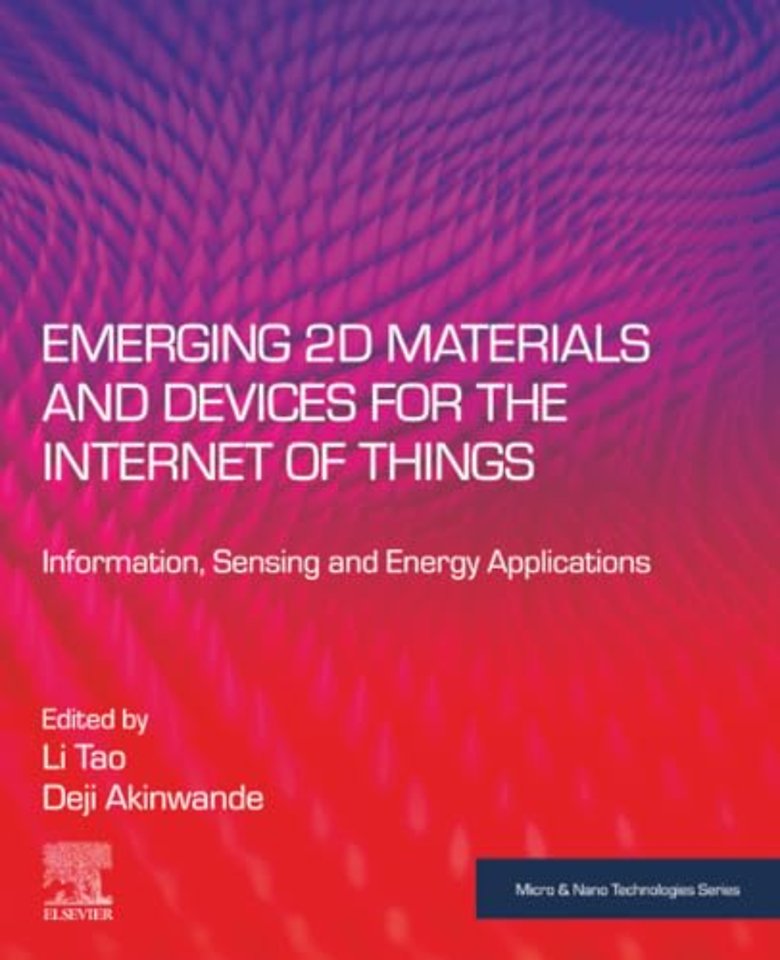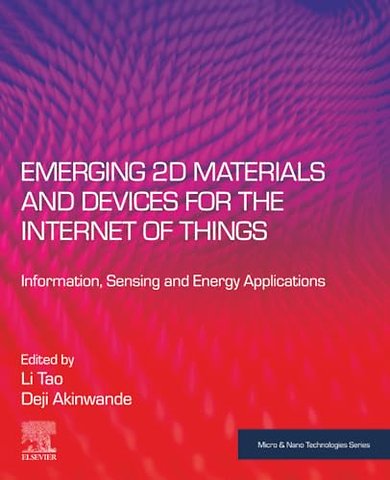<p>1 Two-dimensional materials-based nonvolatile resistive memories and radio frequency switches .......................................................................1</p> <p>Ruijing Ge, Xiaohan Wu, Myungsoo Kim,</p> <p>Jack C. Lee and Deji Akinwande</p> <p>1.1 Introduction to two-dimensional</p> <p>nonvolatile resistive memory........................ 1</p> <p>1.2 Two-dimensional materials preparation</p> <p>and memory device fabrication .................... 3</p> <p>1.3 Two-dimensional nonvolatile resistive</p> <p>memory........................................................... 7</p> <p>1.4 Switching mechanics ................................... 12</p> <p>1.5 MoS2 radio frequency switches .................. 18</p> <p>1.6 Summary ...................................................... 25</p> <p>Acknowledgment ................................................ 25</p> <p>References ........................................................... 25</p> <p>2 Two-dimensional materials-based radio frequency wireless communication and sensing systems for Internet-of-things applications ..............................................................29</p> <p>Liang Zhu, Mohamed Farhat,</p> <p>Khaled Nabil Salama and Pai-Yen Chen</p> <p>2.1 Introduction .................................................. 29</p> <p>2.2 Radio frequency performance of</p> <p>two-dimensional transistors........................ 32</p> <p>2.3 Frequency mixers and signal modulators</p> <p>based on two-dimensional transistors ....... 45</p> <p>2.4 Integrated wireless Internet-of-things</p> <p>sensors.......................................................... 48</p> <p>2.5 Radio frequency energy harvesting using</p> <p>two-dimensional electronic devices ........... 51</p> <p>2.6 Conclusion .................................................... 52</p> <p>References ........................................................... 53</p> <p>3 Graphene electronic tattoo sensors for</p> <p>point-of-care personal health monitoring and</p> <p>human_machine interfaces ..................................59</p> <p>Shideh Kabiri Ameri and Liu Wang</p> <p>3.1 Introduction .................................................. 59</p> <p>3.2 Theoretical background ............................... 61</p> <p>3.3 Fabrication of graphene electronic tattoo</p> <p>sensors.......................................................... 65</p> <p>3.4 Applications of graphene electronic tattoo</p> <p>sensors and effects of the thickness on</p> <p>performance ................................................. 71</p> <p>3.5 Conclusion .................................................... 85</p> <p>References ........................................................... 85</p> <p>4 Transition metal dichalcogenides as</p> <p>ultrasensitive and high-resolution</p> <p>biosensing nodes......................................................87</p> <p>Xiaogan Liang</p> <p>4.1 New opportunities for biosensing</p> <p>devices .......................................................... 87</p> <p>4.2 Electronic biosensors made from</p> <p>transition metal dichalcogenides ................ 94</p> <p>4.3 Biosensors based on optical and</p> <p>optoelectronic properties of transition metal</p> <p>dichalcogenides...........................................103</p> <p>4.4 Biosensors based on structural properties</p> <p>of transition metal dichalcogenides...........107</p> <p>4.5 Final remarks ...............................................112</p> <p>References ..........................................................113</p> <p>5 Nanophotonics and optoelectronics based on</p> <p>two-dimensional MoS2 .........................................121</p> <p>Zilong Wu, Linhan Lin and Yuebing Zheng</p> <p>5.1 MoS2-based nanoplasmonics ....................121</p> <p>5.2 MoS2-based optoelectronics ......................127</p> <p>5.3 Summary .....................................................133</p> <p>References ..........................................................134</p> <p>6 Graphene-based anode materials for</p> <p>lithium-ion batteries ..............................................139</p> <p>Hui Xu, Zhengming Sun and Jian Chen</p> <p>6.1 Introduction .................................................139</p> <p>6.2 Lithium-ion batteries and anode</p> <p>materials ......................................................140</p> <p>6.3 Graphene and graphene-based</p> <p>composites as anode materials..................143</p> <p>6.4 Conclusion and outlook..............................158</p> <p>References ..........................................................159</p> <p>7 Two-dimensional materials as photoelectrodes</p> <p>in water reduction devices for energy</p> <p>applications .............................................................165</p> <p>Li Ji, Xingli Zou, Hsien-Yi Hsu, Kai Huang,</p> <p>Na Gao, Hao Zhu, Lin Chen, Qingqing Sun,</p> <p>Peng Zhou and David Wei Zhang</p> <p>7.1 Basic mechanism of solar water</p> <p>splitting ........................................................167</p> <p>7.2 Design principles of photoelectrochemical</p> <p>cells for water splitting ...............................168</p> <p>7.3 Two-dimensional materials as</p> <p>conducting channels ...................................170</p> <p>7.4 Two-dimensional materials as charge</p> <p>mediator/separator......................................172</p> <p>7.5 Two-dimensional materials as</p> <p>cocatalysts ...................................................174</p> <p>7.6 Two-dimensional materials as other</p> <p>roles..............................................................176</p> <p>7.7 Summary and perspectives........................177</p> <p>References ..........................................................177</p> <p>8 Two-dimensional Xenes and their device</p> <p>concepts for future micro- and nanoelectronics</p> <p>and energy applications .......................................181</p> <p>Carlo Grazianetti, Christian Martella and</p> <p>Alessandro Molle</p> <p>8.1 Introduction .................................................181</p> <p>8.2 First-generation Xenes................................183</p> <p>8.3 Second-generation Xenes ..........................195</p> <p>8.4 Perspectives and conclusion ......................207</p> <p>References ..........................................................208</p> <p>9 Piezoelectric one- to two-dimensional</p> <p>nanomaterials for vibration energy</p> <p>harvesting devices .................................................221</p> <p>Ruijian Zhu and Zengmei Wang</p> <p>9.1 Introduction .................................................221</p> <p>9.2 Preparation and characterization of</p> <p>piezoelectric 1_2D nanomaterials .............223</p> <p>9.3 Piezoelectric 1_2D nanomaterial for</p> <p>energy harvesting .......................................229</p> <p>9.4 Conclusion ...................................................240</p> <p>Acknowledgment ...............................................240</p> <p>References ..........................................................240</p> <p>10 Nanocomposite materials for</p> <p>nano-electronic-based Internet of things</p> <p>sensors and energy device signaling .............243</p> <p>Congyue Liu, Bailin Tian and Mengning Ding</p> <p>10.1 Introduction .............................................243</p> <p>10.2 Nanocomposite materials for</p> <p>chemical sensory devices and</p> <p>Internet of things.....................................245</p> <p>10.3 Electronic sensing and signaling for</p> <p>sustainable energy devices ....................263</p> <p>References ..........................................................285</p> <p>11 Prospects and challenges in low-dimensional</p> <p>materials and devices for Internet of</p> <p>things .......................................................................291</p> <p>Anhan Liu, Siyao Jiang, Zhengrui Zhu,</p> <p>Sixin Zhang, Dingxuan Kang and Li Tao</p> <p>11.1 Flexible and wearable devices for</p> <p>Internet of things.....................................292</p> <p>11.2 Human_machine interface devices</p> <p>for Internet of things ...............................297</p> <p>11.3 Two-dimensional multifunctional</p> <p>device node for Internet of things..........305</p> <p>11.4 Sustainable energy devices for</p> <p>Internet of things.....................................313</p> <p>11.5 5G/6G technology engaging with</p> <p>Internet of things.....................................319</p> <p>References ..........................................................323</p> <p>Index..................................................................... 329</p>

